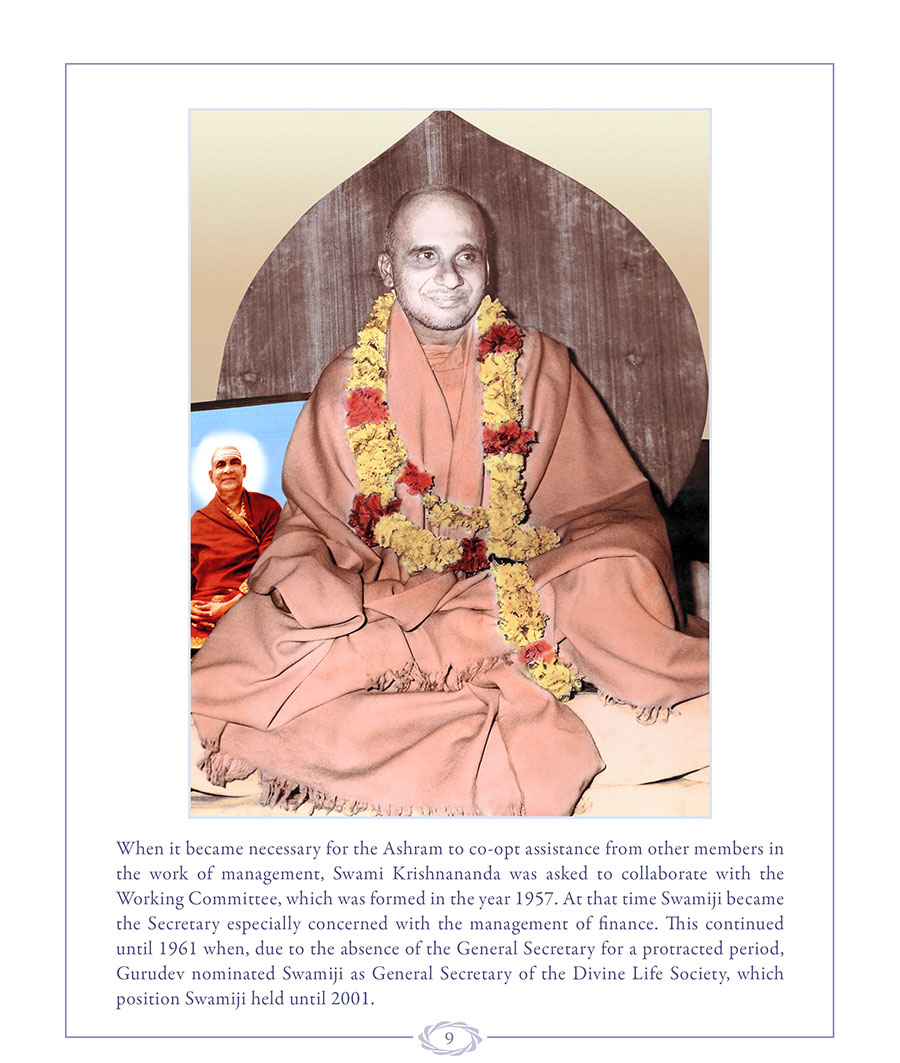The Bhagavad Gita – A Synthesis of Thought and Action: 6. ( ENDS) Swami Krishnananda
Friday 16, May 2025, 10:35.
Article
Scriptures
The Bhagavadgita:
A Synthesis of Thought and Action: 6.
Swami Krishnananda
(Spoken on Gita Jayanti in 1973)
======================================================================================
The gunas perceive gunas. We do not perceive the world. Forces come in contact with forces. Energy collides with energy. Nature perceives itself. We do not perceive nature. Therefore, in this cognition of nature by its own self there cannot be any such thing as pleasure or pain. There is only an impersonal demand for duty on the part of every individual, irrespective of caste, creed, colour, sex, age, etc. What nature demands of us does not depend upon our age, our culture, our understanding, etc. It is universally applicable, like the law of gravitation. The law of gravitation does not apply only to old people or young people or learned people, etc. It is for all and sundry. The law of gravitation is one of the forces of nature, and hundreds of others exist in its bosom.
Thus, on the basis of this Sankhya knowledge of the uniformly applicable structural pattern of nature, our actions have to be gauged. Arjuna became giddy. “Very difficult, sir! What are you saying? I cannot act. My mind is giddy. I cannot understand what you are saying.” Then Arjuna's thoughts are raised step by step from one stage to another stage through the various chapters of the Gita until the apotheosis or the apocalypse is reached in the Universal Viratsvarupa in the Eleventh Chapter. Unless we have the cosmic vision of the Absolute, we cannot understand the world. “Arjuna, you cannot even lift your finger unless you see the Universal Form.” And after the Universal Form was visualised, the proper location of the individual was known. The correct position of each person in respect of the Universe was understood. My status is known only when I know what the Universal is. So Arjuna could not take a single step until the Vision Supreme was bestowed upon him – Sankhya, knowledge, melting into an experience of the very basic creative will and power of the cosmos.
It is in this basic foundation of the cosmos that we have an answer to the question of the relation between matter and spirit of the individual and the world and society. All antitheses get reconciled in the Vision Supreme. The Bhagavadgita takes us through action to knowledge, though it goes from knowledge to action, thus blending knowledge and action in a beautiful synthesis so that knowledge and action cease to be two different approaches. We have not here the conflict between knowledge and action, as both mean one and the same thing. When action understands itself, it is called knowledge; when knowledge starts moving, it is called action. They are one and the same.
Such is the basic implication of the Bhagavadgita gospel, knowledge and action combined, providing a simple rule of judgment of values in our day-to-day life – God speaking to man and God blessing man perennially with an inspiration that can be explained only in terms of that vast unfoldment of Realisation we have in the Eleventh Chapter of the Bhagavadgita. This unfoldment of Realisation concretising itself into manifold activity is expounded in the remaining chapters from the Thirteenth onwards until it reaches the Eighteenth Chapter where all social problems are also touched upon and explained, concluding with a resounding message that God and man should work in unison. Human effort and divine existence are to work in synthesis, in collaboration, in unison, so that when man thinks, God thinks, and when God thinks, man thinks. They are not two different thoughts. When one acts, the other also acts. Where such unity of action rises from a correct understanding of the structure of creation, success is bound to come. “You will certainly succeed in your life; there is absolutely no doubt,” says Sanjaya towards the end of the Bhagavadgita gospel.
*****
END.
.jpg)








Comments
Post a Comment